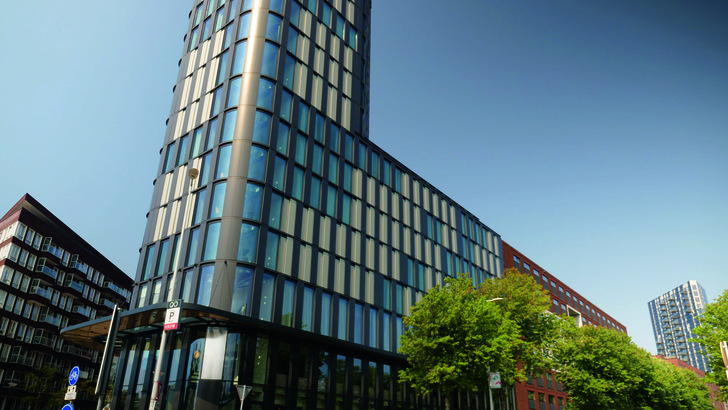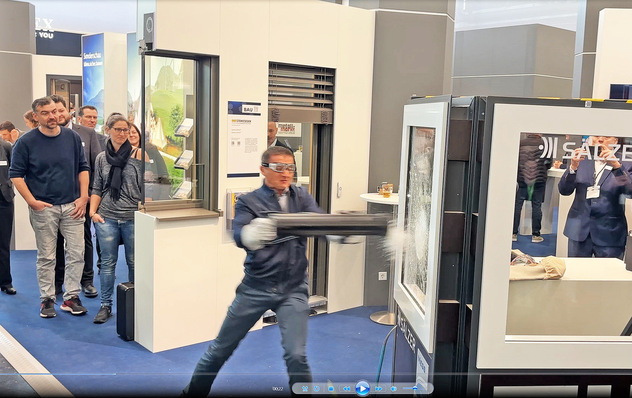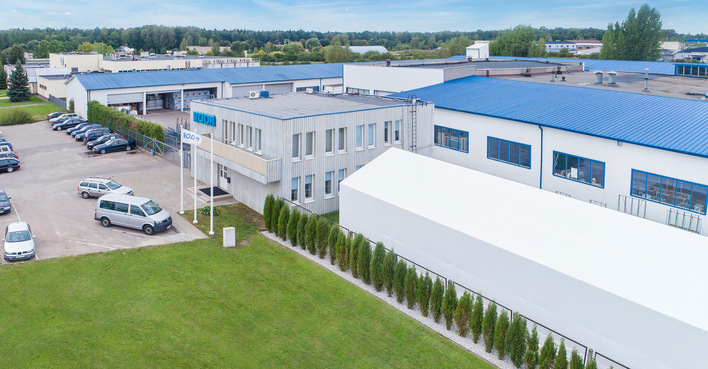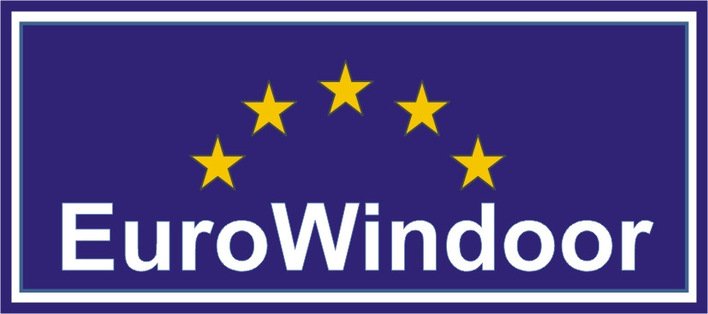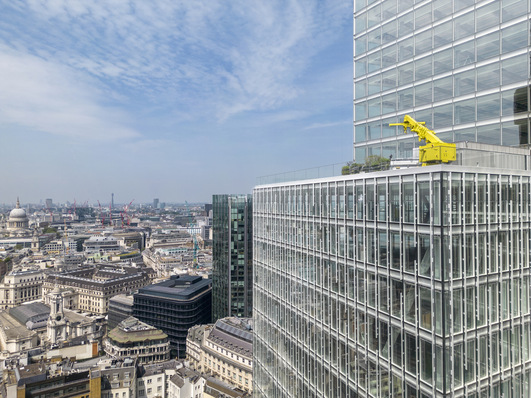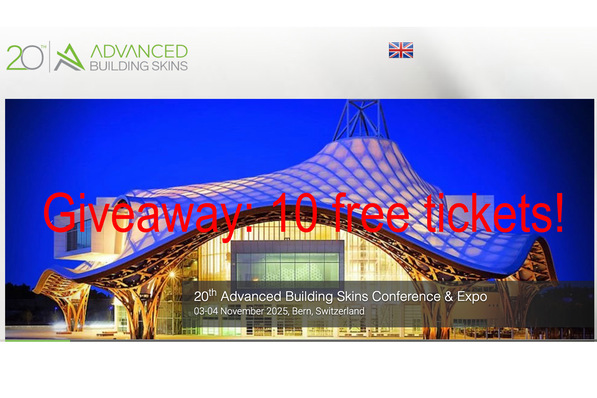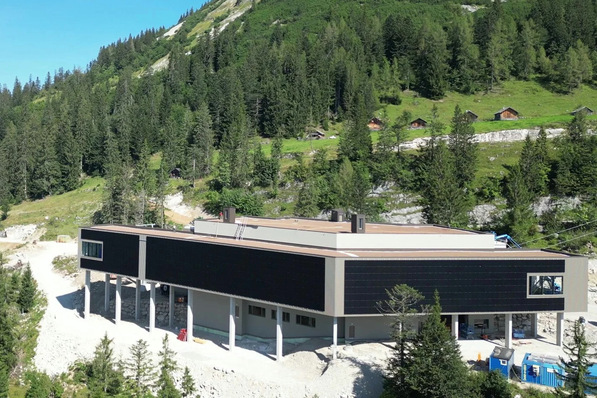An integral component of the energy and sustainability concept is the 'living' facade consisting of glass and aluminium elements as well as moving panels. The unique building shell was realised by the Dutch metal construction company Blitta BV from Venray using the Hueck Trigon Unit L unitised facade.
The declared aim of the planning of the four-star hotel was not only to reduce the impact on the environment, but also to redefine the concept of a hotel based on independent units that blend into their surroundings. On behalf of the client Amstelside BV, the architecture firms Paul de Ruiter Architects and Mulderblauw architecten worked together to design a sustainable building that minimises the consumption of water, energy and other resources.
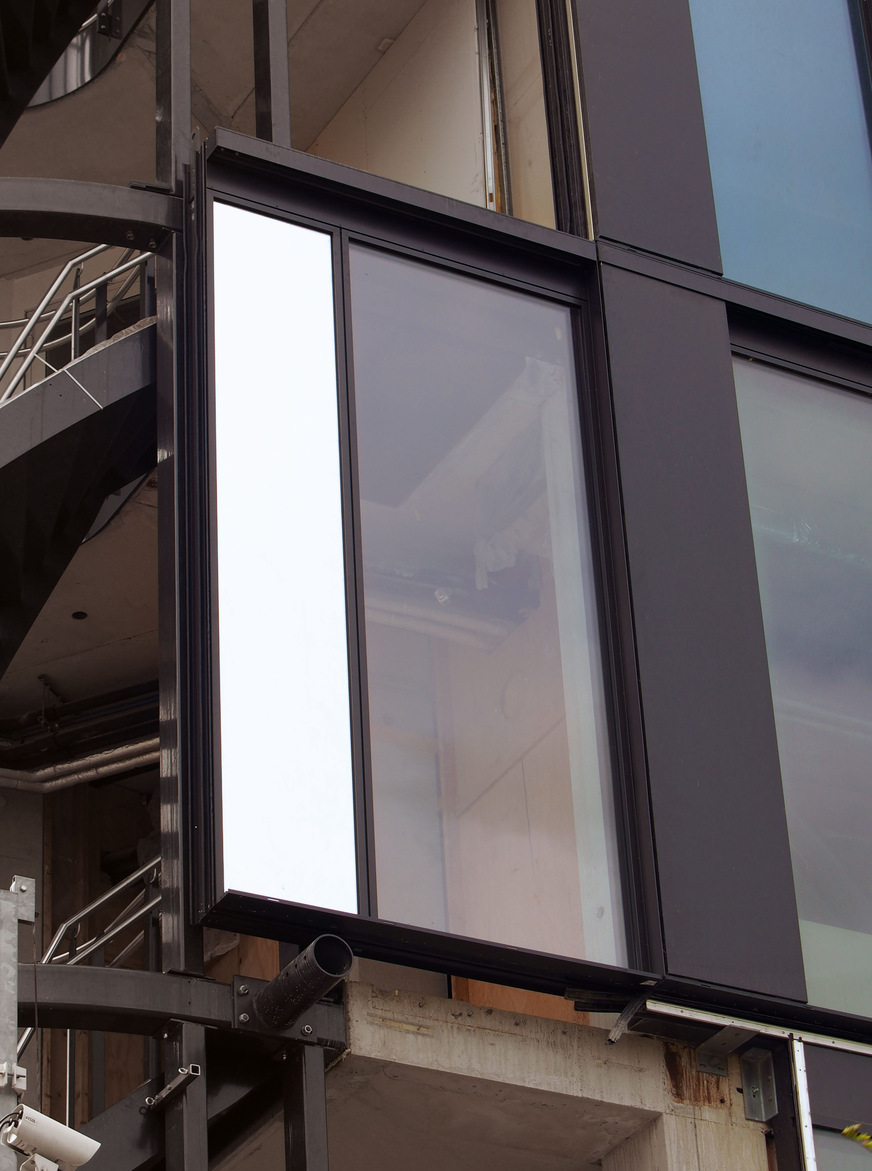
Hueck
Today the QO Hotel houses 288 hotel rooms and a restaurant, and is a striking example of the area’s redevelopment in the south-east of Amsterdam. In addition to a slender 75-metre tower with gently rounded edges, it features an eight-storey base whose height matches that of the adjoining buildings.
Aluminium most sustainable material
„We are really proud of this building. It’s truly one of a kind,” say the architects Robert Mulder and Paul de Ruiter. One key element of the building’s sophisticated sustainability concept is its intelligent façade, which fuses functionality and energy efficiency into a single aesthetic unit.
“We opted for an aluminium facade because this has a higher proportion of recycled material than steel. The facade therefore scores significantly better in the LEED Platinum rating in terms of material usage,” explains de Ruiter, adding that aluminium is the most sustainable material for a facade of this type.
Read also ths article: TU Delft's Bucky Lab: The glazed frost window
The development of the facade in particular was a long and drawn-out process. The challenge was to regulate the facade so that it responded intelligently to climatic conditions. For example, if you need heat in winter and the sun is shining, the window shutters open automatically to allow the heat in.
And conversely if the sun is shining in summer, the shutters close so that less energy is needed for cooling. The more than 800 gold-coloured anodised panels within a strict grid arrangement of dark-grey aluminium elements and floor-to-ceiling glass surfaces therefore play a special role, and not just in terms of their appearance: when the guest is not in the room, the striking sliding elements in front of the glazing respond to weather conditions automatically, giving the building a lively and highly dynamic exterior appearance.
Why were there tricky calculations necessary?
The renowned Dutch metal construction company Blitta implemented this unique facade using a special solution based on the Hueck Trigon Unit L standard facade system. This highly thermally insulated aluminium element facade with fixed glazing made of functional insulating glass meets the full range of requirements for modern thermal insulation.
“The panels presented a challenge both for the metal construction company and for the systems provider,” says Hueck Key Account Manager Jeroen van der Roest, who supervised the project. Among other things, the facade had to dissipate the wind load from the panels – which run on tracks at the top and bottom – even at a great height. “That involved some tricky calculations.”
Even more complex was the collaboration with the manufacturer of the automatically closing blinds. “Here, the facade technology, drive technology, electronics and building management had to be coordinated precisely to ensure that the panels work reliably in the long term,” says van der Roest.
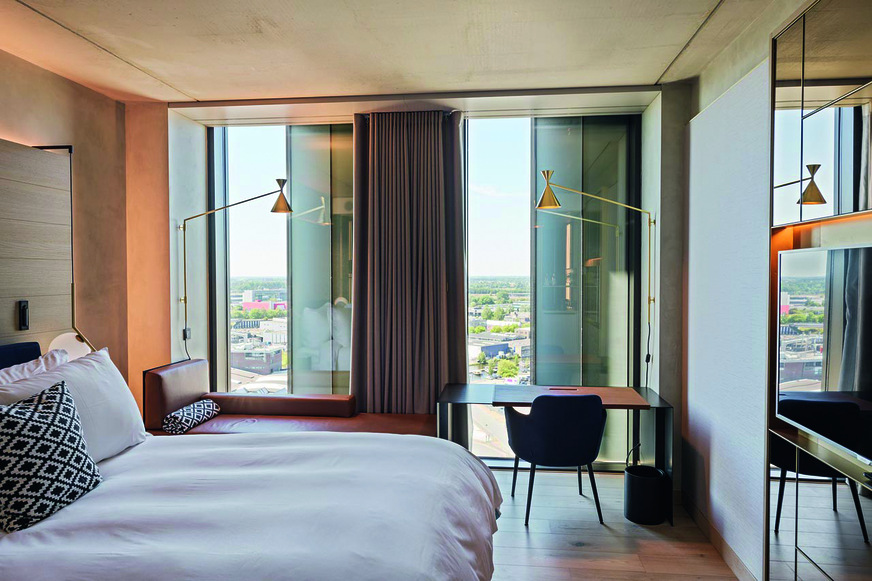
Hueck
The glass facade, which is curved by up to 51° with a radius of approx. 1,400 mm at the edges of the tower, was also quite a fiddly job. “Five different parts had to be bent and combined into one element: the top and bottom profiles, the transoms and two glazing beads,” says van der Roest. Aluminium of hardness grade EN AW 6060 T4 was used here. “
This project marked the first time that we’ve worked with Hueck, and the collaboration was highly effective,” summarises Blitta’s Managing Director Henk Schaminee. “I received very positive feedback from our staff regarding both the system and the customer service.”
Related article:
Comfort has never been as smart as it is today
The Leadership in Energy and Environmental Design certification was developed by the U.S. Green Building Council in 1998 and is known today as a world-recognised sustainability assessment. As a system for classifying eco-friendly construction, it defines numerous standards for environmentally responsible, resource-efficient and sustainable building projects.
The assessment categories include: Sustainable Sites, Water Efficiency, Energy and Atmosphere, Materials and Resources, Indoor Environmental Quality, and Innovation and Design Process. Points are awarded in each of the criteria in order to evaluate the building as a whole. The total number of points obtained then determines the classification used in certification. Platinum is the highest possible rating.
Also interesting:
How the glass industry can benefit from the market for BIPV
Aquarium of the Pacific
Smart glass with a frameless all-glass look







